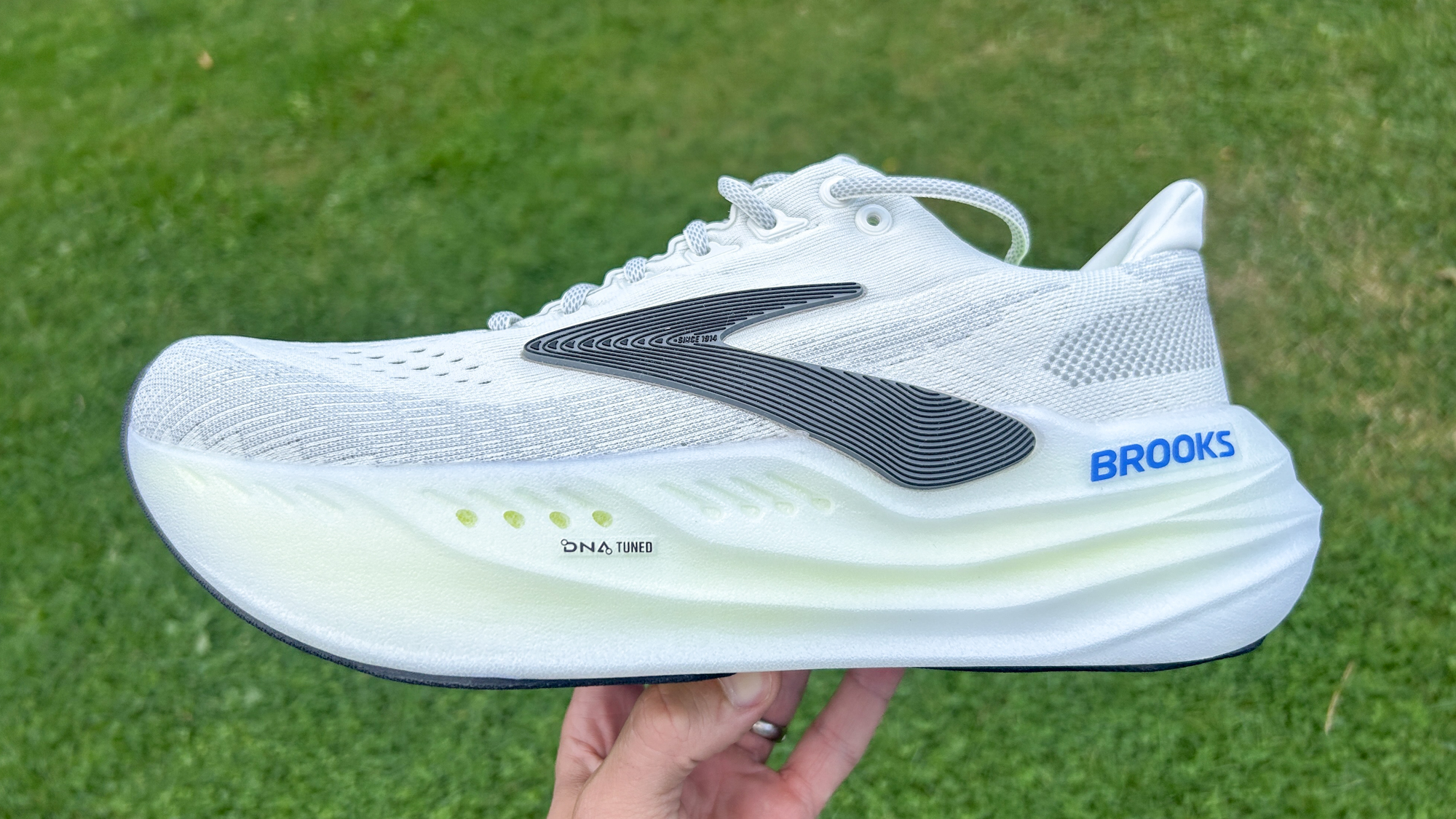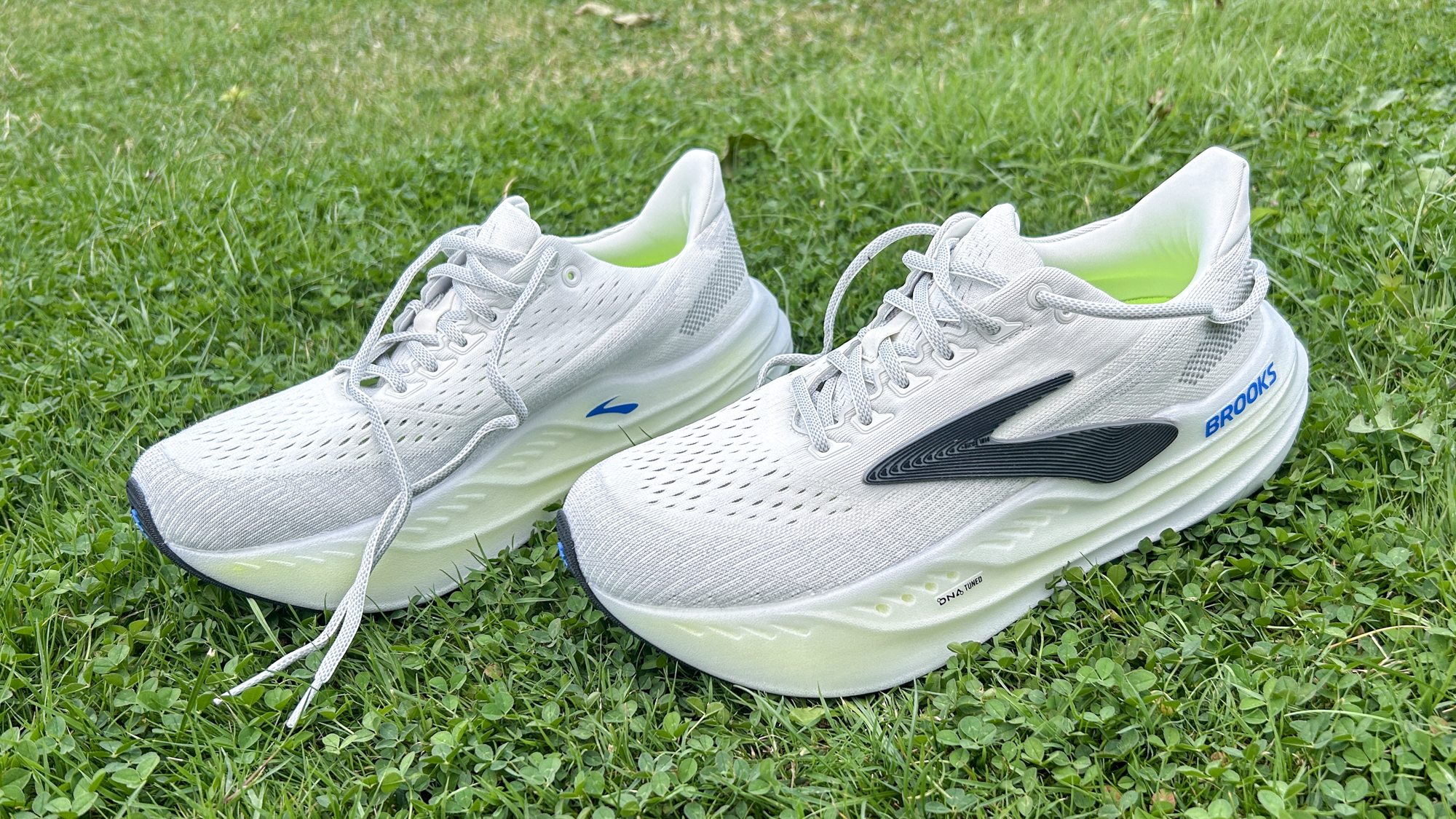I ran in the Brooks Glycerin Max — here's what I learned
Brooks' new shoe is its most comfortable yet

Brooks makes some of the best running shoes available, especially when it comes to comfortable cushioned shoes that are ideal for racking up the miles while protecting the legs. Models like the Brooks Ghost 16 and Brooks Glycerin 21 are popular with new and experienced runners alike as a result.
The new Brooks Glycerin Max aims to deliver the brand’s most luxurious experience yet for runners. It has a very high stack of foam in the midsole, which is Brooks’ new DNA Tuned material that’s designed to deliver more comfort at the heel of the shoe and a more responsive feel at the forefoot.
This is achieved using two different densities within the same midsole — larger cells create a softer, more comfortable feel at the heel, while smaller ones deliver more energy return at the forefoot. It sounds great on paper, but the new materials in the shoe means it comes at a high price compared to Brooks’ other models.
Brooks Glycerin Max: price and availability

The Brooks Glycerin Max will be available in limited amounts from October 1 and it costs $200 in the U.S. and £180 in the U.K. There is one color of the men’s shoe and one of the women’s available at launch. Both have are mostly white, with the midsole having a yellow section on the men’s shoe, and pink on the women’s.
It’s more expensive than Brooks’ other cushioned shoes, like the Ghost 16 and Glycerin 21, and it’s even pricier than the brand’s plated super-trainer, the Brooks Hyperion Max 2. It’s a high price to live up to, so what’s it like to run in the Brooks Glycerin Max? I’ve been for two runs in the shoe so far, and I’m impressed.
The DNA Tuned midsole is an upgrade
I’ve tested the past few generations of all of Brooks’ other cushioned shoes, including the latest models like the Brooks Ghost Max 2, Glycerin 21 and Ghost 16. I’ve liked all of them, but the midsole on the Glycerin Max delivers a better ride.
It’s very comfortable at the heel, where you have a huge 45mm stack of soft cushioning, but as you move through your footstrike the foam firms up a little to deliver a more responsive toe-off. Sometimes with high-stack cushioned shoes I find them too soft and it can feel like I’m wading through the foam, but that’s not the case with the Glycerin Max thanks to the more resilient material giving it some nice pop off the forefoot.
Get instant access to breaking news, the hottest reviews, great deals and helpful tips.
It feels lighter than it is

The Glycerin Max is a big shoe and at 11.2oz in my U.S. size 10 it’s not that light on the scales, but it feels lighter than that on the run. I think this is down to the responsive feel of the foam and the rocker on the shoe, which rolls you onto your toes smoothly and quickly so you don’t feel the full weight of the shoe as much.
I had a similar feeling when testing the Ghost Max 2, which also uses Brooks’ GlideRoll rocker, but it was even more noticeable with the Glycerin Max. You can still feel there’s a lot of foam underfoot, but it’s not to its detriment.
The heel design on the shoe is more comfortable
Brooks is known for making shoes with very padded uppers and stiff heel counters, which creates a comfortable and stable step-in feel for the shoes. However, I sometimes find my Achilles tendon is irritated by the stiff, padded heels on shoes like the Ghost 16.
The Glycerin Max has a slightly different heel design to the standard Glycerin and other Brooks shoes. It’s still padded and there’s an internal heel counter, but it feels more flexible and less noticeable, and it didn’t flare up my Achilles tendinitis at all. The tapered, high heel collar looks a bit like a Hoka shoe, and I’ve always found Hoka shoes comfortable around the heel.
It doesn’t feel like a speedy shoe
The high price and new tech in the Glycerin Max might bring to mind the Asics Superblast 2, which has a similar stack and uses Asics’ top foams. The Superblast 2 is a lighter, stiffer and faster shoe than the Glycerin Max, however, and built more for versatility. So far I’d say the Glycerin Max feels more like a cushioned daily trainer designed to make the easy miles tick by effortlessly, rather than one that excels for speedwork or racing.
You can get shoes that do a similar job that cost a lot less than $200, including several from Brooks themselves like the Glycerin 21, so the high price will raise eyebrows. Other cushioned options like the Saucony Hurricane 24 and the Asics Gel-Nimbus 26 offer a lot of comfort for $160, for example. The Glycerin Max is good, but the price might be a sticking point for lots of runners.
More from Tom's Guide
- The best carbon plate running shoes 2024
- I ran 40 miles in the Puma Deviate Nitro Elite 3 carbon racing shoe — here’s my verdict
- I raced 10K in the Nike Vaporfly 4% to see how the original carbon shoe compares to today’s racers — here’s what I learned

Nick Harris-Fry is an experienced health and fitness journalist, writing professionally since 2012. He spent nine years working on the Coach magazine and website before moving to the fitness team at Tom’s Guide in 2024. Nick is a keen runner and also the founder of YouTube channel The Run Testers, which specialises in reviewing running shoes, watches, headphones and other gear.
Nick ran his first marathon in 2016 and became obsessed with the sport. He now has PBs of 2hr 25min for the marathon and 15min 30sec for 5K. Nick is also a qualified Run Leader in the UK.
Nick is an established expert in the fitness area and along with writing for many publications, including Live Science, Expert Reviews, Wareable, Coach and Get Sweat Go, he has been quoted on The Guardian and The Independent.
